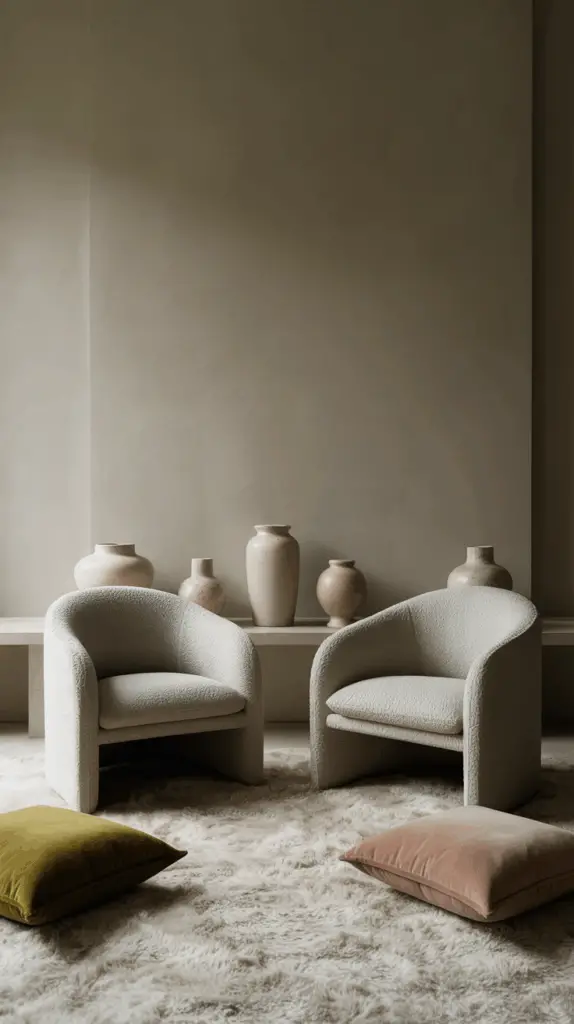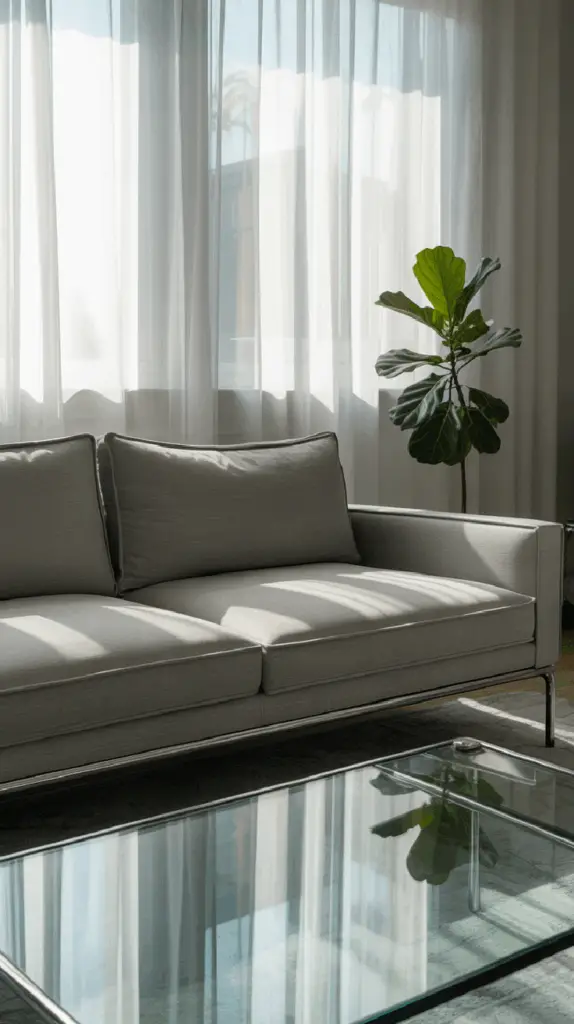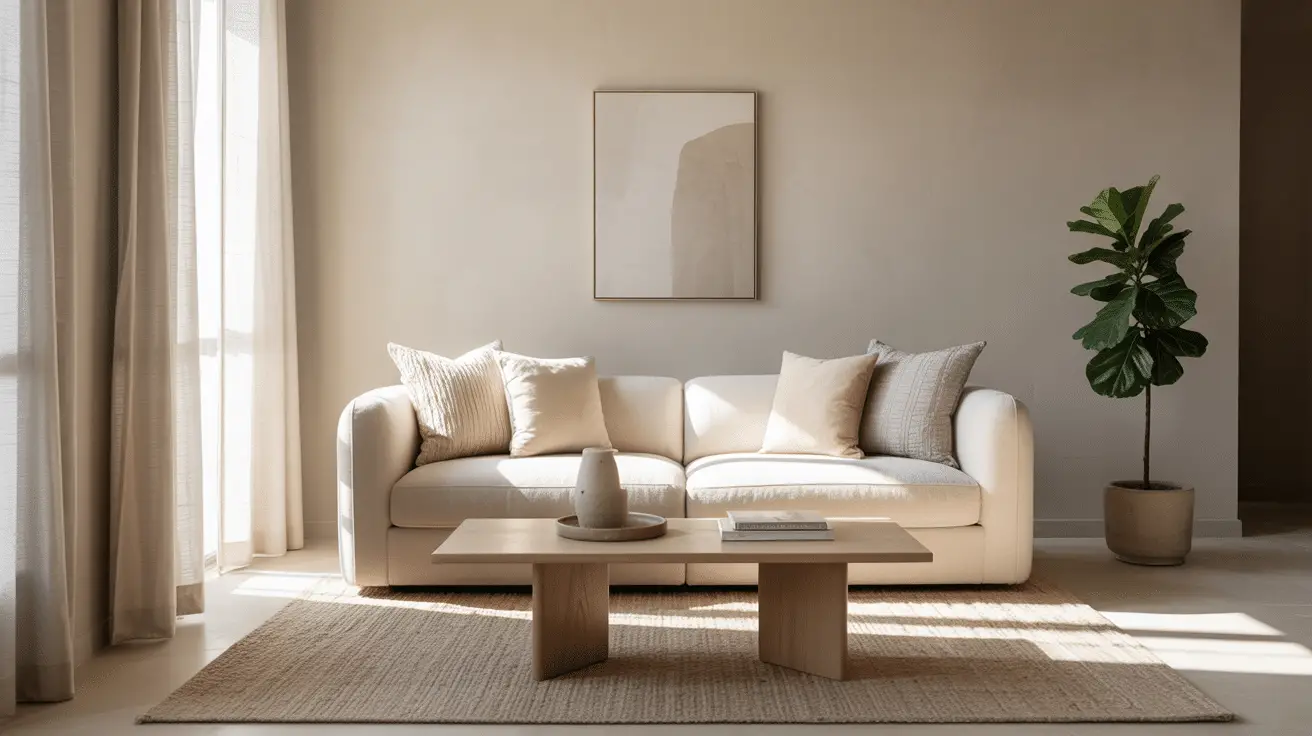Gray Living Room Design Ideas That Top Interior Designers Swear By
Table of Contents
The Best Gray Living Room Design Tricks Designers Swear By
A gray living room doesn’t have to be dull or cold—in fact, when styled right, it becomes the most effortlessly sophisticated space in your home. From modern lofts to traditional homes, gray has become the go-to color for designers aiming to strike a perfect balance between versatility, elegance, and comfort. But the key lies in how you design around it.
Why does gray remain such a popular choice in living room decor? For one, it pairs beautifully with almost any accent color. It works across styles—whether you’re going for minimal Scandinavian chic, bold contemporary, or warm rustic tones. The challenge, however, is keeping it from looking flat or uninspired.
In this guide, we’ll explore the top tricks that professional interior designers use to bring gray living rooms to life. You’ll learn how to play with texture, lighting, accent colors, furniture choices, and even wall treatments to transform your space into a cozy yet refined haven. Whether you’re redecorating from scratch or simply refreshing your layout, these tips will help you master the art of decorating with gray.
Start with the Right Shade of Gray
Gray is not just one color—it’s an entire spectrum. Choosing the right tone sets the foundation for your living room’s mood and functionality. Designers often begin by asking: warm or cool?
Warm grays have undertones of beige, taupe, or brown, creating a cozier, earthier feel. These shades work beautifully in traditional or rustic-style living rooms. Cool grays, on the other hand, contain hints of blue or green, lending a more modern, airy, and clean vibe.
Before committing, test your shade in natural and artificial lighting. What looks warm in the paint store may turn icy in your living room depending on light exposure and surrounding elements.
Tone Comparison Table:
| Shade Type | Undertones | Best For | Pairs Well With |
| Warm Gray | Beige, Taupe | Cozy, traditional interiors | Terracotta, brass, olive |
| Cool Gray | Blue, Green | Sleek, modern spaces | Black, navy, chrome |
| Greige | Gray + Beige | Transitional or neutral rooms | Cream, wood tones, whites |
Layer Textures to Avoid a Flat Look
One of the most common mistakes when decorating with gray is relying too heavily on flat surfaces and monochromatic pieces. This can make the space feel sterile or lifeless. Designers counteract this with layered textures.
Think of gray as your base canvas and texture as the brushstrokes that give it dimension. Combine velvet throw pillows with chunky knit blankets. Add linen curtains, a high-pile rug, or a leather armchair. Even matte versus glossy surfaces add variation.
Mixing tactile elements brings warmth and interest without disrupting the gray palette. Focus on contrasting smooth and rough finishes, soft and structured forms, and light-reflective surfaces versus matte ones.
Texture Layering Guide:
| Element | Recommended Textures | Purpose |
| Pillows & Throws | Velvet, faux fur, chunky knits | Softness, comfort |
| Flooring & Rugs | Woven wool, shag, jute | Grounding, warmth |
| Upholstery | Linen, leather, boucle | Contrast, visual depth |
| Decor Accents | Brushed metal, stone, ceramics | Interest, light play |

Use Contrasting Accents for Balance
Too much gray can overwhelm a space, but well-placed accent colors can bring the whole room to life. Professional designers strategically use contrast to break up gray’s dominance.
For a bold, high-end look, add black or navy accents through framed artwork, lamp bases, or furniture legs. Want a touch of warmth? Earthy tones like terracotta, camel, mustard, and olive soften the atmosphere and bring cozy charm. For a more modern and airy feel, pair gray with crisp whites and metallics.
Accent walls, throws, cushions, and artwork are ideal areas to introduce these pops of color. Stick to a consistent palette of two to three contrasting tones to avoid visual chaos.
Accent Color Combinations with Gray:
| Gray Base Tone | Accent Color | Effect Produced |
| Cool Gray | Navy + White | Sleek, minimal, clean |
| Warm Gray | Rust + Olive | Cozy, grounded, rustic |
| Greige | Gold + Cream | Soft, elegant, inviting |
Maximize Natural and Artificial Lighting
Lighting is a designer’s secret weapon when working with gray interiors. Gray reflects light differently depending on its tone, finish, and what surrounds it. Poor lighting can make the space feel dreary; great lighting enhances depth and color.
Maximize daylight with sheer curtains or layered window treatments. For artificial lighting, include ambient (ceiling fixtures), task (reading lamps), and accent (sconces, LED strips) sources. Use warm white bulbs for a soft glow, especially with cool gray walls.
Designers also play with reflective surfaces like mirrors, chrome, or glass-topped tables to bounce light and open up the room.
Lighting Strategy Breakdown:
| Lighting Type | Examples | Role in Gray Spaces |
| Ambient | Ceiling lights, chandeliers | General illumination |
| Task | Table lamps, floor lamps | Function-focused brightness |
| Accent | Wall sconces, LED backlighting | Drama and highlighting texture |
| Natural Light | Large windows, sheer drapes | Brightens tone, adds warmth |

Add Dimension with Wall Treatments
Walls don’t have to be flat and forgettable. Designers often use creative treatments to add depth and style to gray walls.
Consider wainscoting, vertical paneling, or board-and-batten to introduce structure. Textured wallpaper in a subtle print or a mural in grayscale can also create a high-end look. Even a simple gallery wall in monochrome frames can transform a blank canvas.
If you’re aiming for luxury, a gray wall with metallic or concrete finish adds character while staying within the color palette.
Wall Treatment Options:
| Treatment Type | Visual Effect Created | Design Style It Complements |
| Wainscoting | Classic, structured | Traditional, transitional |
| Textured Wallpaper | Rich, layered | Modern, eclectic |
| Concrete Finish | Industrial, edgy | Contemporary, loft-style |
| Gallery Wall | Personalized, dynamic | Any style with cohesive curation |
Choose Furniture That Enhances the Gray Palette
Furniture choices can make or break a gray living room. The key is balance—don’t let every piece be gray. Instead, mix grays with wood tones, metals, or colored upholstery to break up monotony.
Opt for a light gray sofa with dark wood legs, or a charcoal sectional offset by creamy chairs. Materials matter, too. Leather, boucle, and velvet all interact with gray in interesting ways. Think of your furniture as a layered story, not a matching set.
Professional designers often center the room around one standout piece—like a velvet gray sofa or sculptural coffee table—and build out the palette from there.
Furniture Material Mix Table:
| Item | Material Suggestion | Complements Gray How? |
| Sofa | Linen, Velvet | Soft contrast, elegance |
| Coffee Table | Wood, Marble, Glass | Texture and tonal variety |
| Chairs | Patterned fabric, boucle | Adds personality, depth |
| Side Tables | Brass, black metal | Subtle pops of contrast |
Incorporate Nature-Inspired Elements
To prevent gray from feeling too artificial or sterile, many designers turn to nature. Organic touches like wood, stone, greenery, and natural fabrics bring life and warmth to the space.
A reclaimed wood coffee table, indoor olive tree, or stone planter creates balance against gray walls. Even simple linen curtains or rattan baskets help soften the modern edge of a gray room.
Nature-inspired decor not only grounds the room but also introduces subtle color variations and textures that make the space feel lived-in and inviting.
Nature Element Ideas:
| Natural Material | How to Use It in Gray Rooms | Added Benefit |
| Wood | Flooring, tables, frames | Warmth, grounding feel |
| Plants | Indoor trees, potted plants | Freshness, color contrast |
| Stone | Vases, side tables, decor | Texture, durability |
| Linen/Cotton | Curtains, cushions, throws | Breathability, softness |
Conclusion
Gray living rooms are far from boring—when styled intentionally, they can be the most inviting, stylish, and versatile spaces in your home. Whether you prefer a cool contemporary feel or a warm, rustic charm, the color gray provides a flexible canvas for endless design possibilities.
The key lies in layering textures, choosing the right tone, balancing light, and introducing thoughtful contrasts through furniture, lighting, and natural accents. With these designer-backed strategies, your gray living room can become a true reflection of both sophistication and comfort.
So as you rethink or refresh your space, keep these principles in mind—and watch your gray room come vibrantly to life.

